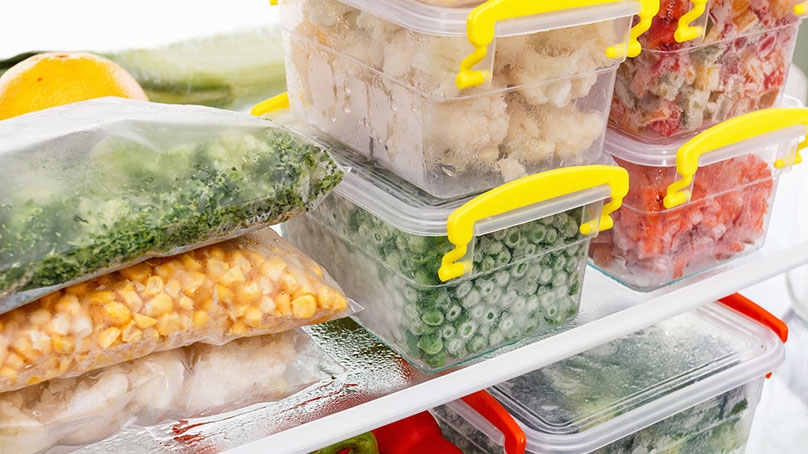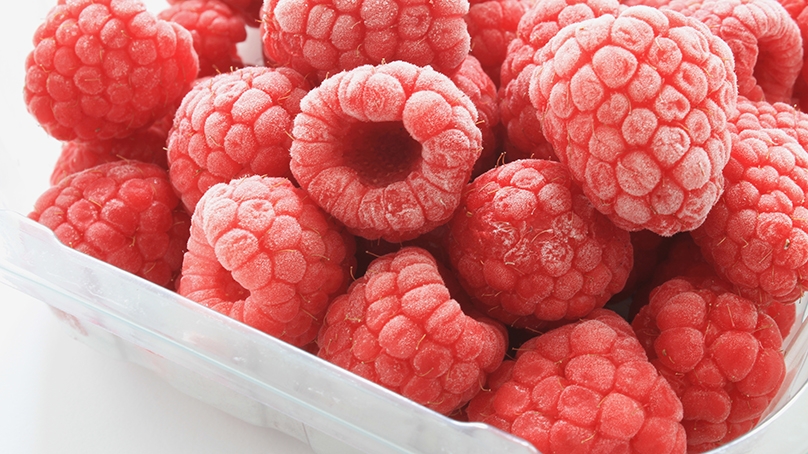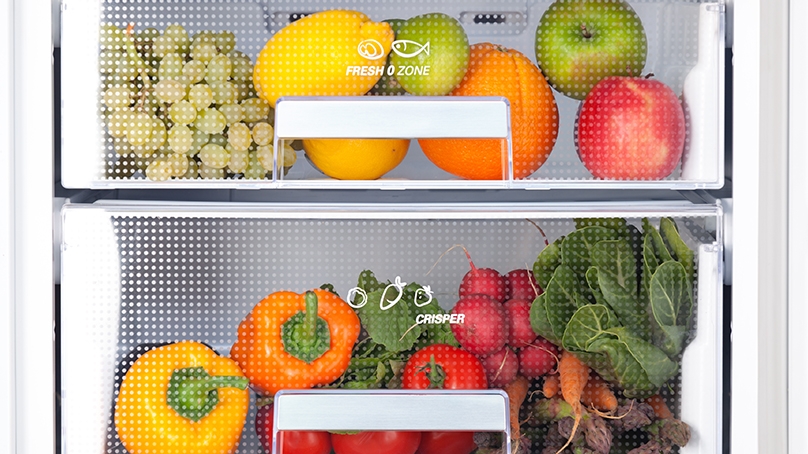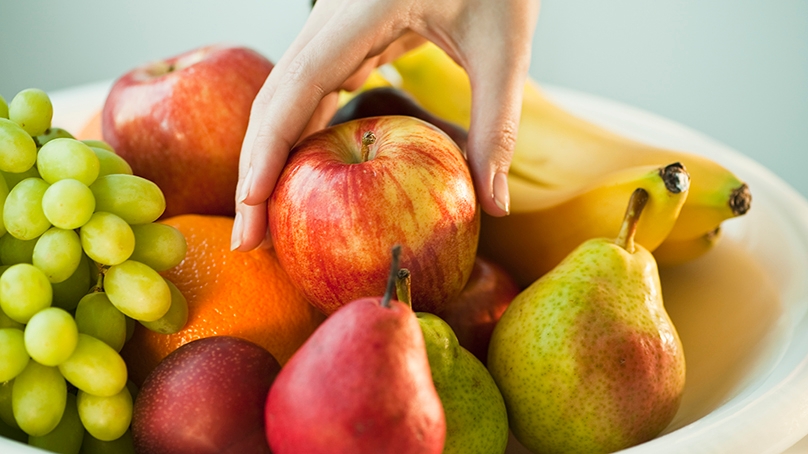5 Practical Tips for Reducing Food Waste & Saving Money
August 02, 2017 | Food Lion


Being a good cook is about more than mastering recipes. It’s about making the most of the food you have on-hand. Unfortunately, many of us fail in that department. The USDA estimates that 30 to 40% of food in the United States goes to waste. Definitely a little shocking, but true. We toss out food that isn’t aesthetically pleasing, stock our refrigerators with the best intentions but order in because we’re too busy to cook, and err on the side of caution when it comes to using food that’s a little past its prime.
But, even the busiest of us can do plenty at home to use more of the food we buy. Here are five practical tips for reducing food waste and saving money.
Freeze-Out Food Waste
Did you know? Many foods can be frozen just before their expiration date to extend them past their prime. These include:
Flour. Store it in the freezer in an airtight container to keep it from spoiling. Then, when you’re ready to use it, warm up the flour on the counter.
Fresh herbs. Strip the leaves off the stems. Freeze the leaves on a cookie sheet. Then, transfer them to a freezer bag or airtight container. You can also chop them up and freeze them in olive oil in an ice cube tray. Either way, they can easily be added to recipes.
Eggs. Remove eggs from their shells and whip them up for future scrambled eggs. Pour them into an airtight container and place them in the freezer. Thaw the eggs overnight in the refrigerator when you’re ready to use them.
Onions. Dice up your onions and freeze them on a cookie sheet before transferring to a freezer bag. They can be added to most recipes that call for a diced onion with little or no thawing.
Buttermilk. Freeze by the tablespoon in ice cube trays, then transfer to a freezer bag once frozen. Thaw in the fridge when ready to use. The consistency will change once thawed, but it’s still absolutely fine for use in recipes.

Love Your Leftovers
If you’re like most people, your refrigerator slowly fills with leftovers as the week goes by. But, many times, those containers are emptied into the garbage can instead of on your plate. But with a little effort, you can enjoy the extra time and money that comes from eating food you’ve already cooked. Plus, you’ll be reducing food waste too!
Portion it Out
Rather than storing leftovers in one large container, stash them in portion-sized containers. They’ll make your leftovers easier to grab and go for lunch the next day.
Designate Space
Have a dedicated area or shelf in your refrigerator for leftovers and store them in clear containers. Trust us - it will help you remember to use them before they go bad and prevent moldy surprises later.
Leftovers Night
Dedicate one night per week to eating leftovers. If reheating last night’s dinner just seems too boring, plan meals with leftovers in mind. Last night’s roasted chicken can easily be tonight’s chicken salad. And Wednesday night’s baked potatoes and broccoli can be Thursday’s frittata.

Give Fruits and Vegetables New Life
In America, wasted produce alone costs a family of four $1,600 per year according to a recent statistic from EPA Land. Don’t let your crisper drawer turn into a produce graveyard. Instead, reduce food waste and give your fruits and vegetables a new lease on life.
Avocados, Bananas & Fruit
Peel and cut into small chunks for use in a blended protein shake or smoothie. But, if you can’t use them right away, freeze them on a cookie sheet and transfer them to a freezer bag. Frozen bananas will give your smoothie a richer, creamier texture.
Tomatoes
Chop your tomatoes and use them to make a pasta sauce. You can either use your sauce right away or store it in your freezer for up to six months. That leaves plenty of time for pasta dinners!
Lettuce & Other Leafy Greens
Revive your leafy greens by placing them in a bowl of cold water, disposing of any leaves that look too slimy. Cooking greens like broccoli rabe, chard, and kale and incorporating them into a quiche is a great option. After all, quiche can easily be frozen and saved for another occasion. On the other hand, lettuce, which is 96% H2O, may perk up enough in the cold water to use it in a salad.
Apples
Make applesauce by cooking the apples until they are soft and mashing them into a sauce. You can then eat your applesauce or use it in a recipe immediately, or freeze it for later use.
Potatoes
Shred potatoes in your food processor and freeze them. They’ll make delicious hashbrowns later or could be added to a delicious breakfast casserole.
Grapes
Frozen grapes make a yummy snack you and your family will love. You can also use them in place of ice in your sangria.

Store Food in the Right Place
If you stick all produce in the refrigerator as soon as it comes home from the store, you may be surprised to know that some fruit and vegetables last longer when stored at room temperature. Likewise, certain areas of your refrigerator are better for certain foods.
- Store bananas, apples and tomatoes by themselves (and fruits and veggies in different drawers). That's right! Bananas, apples and tomatoes give off natural gases as they ripen, making other nearby produce spoil faster. Store these items by themselves and store fruits and vegetables in different drawers.
- Produce that is refrigerated at a grocery store should generally be refrigerated at home too. Potatoes and onions should be kept in a cool, dry place, but not in the refrigerator.
- Did you know? The door is the warmest part of your refrigerator. Put your least perishable items, such as condiments and orange juice, on the door. Even if your refrigerator has a compartment for butter or eggs, it's best to keep them elsewhere.
- Your refrigerator's top shelf has the most consistent temperature. Use this for dairy, ready-to-eat foods, and leftovers.
- Cold air sinks, so the bottom shelf is the coldest area of the fridge. Store eggs, deli meats and fish here.
Get High-Tech Help
How often do you look at a refrigerator or pantry brimming with food and think there’s nothing to cook? Well, there are apps to help inspire new meals.
- Fresh Fridge. With this app, you can track the food you have in your refrigerator and pantry so you can make sure to use the items you have before they spoil and reduce food waste. All you have to do is scan the items’ barcodes with the app and it does the tracking for you. Then, when it’s time to restock, Fresh Fridge allows you to add items to an in-app shopping list.
- SuperCook. Type in your ingredients or choose from the available categories. The site will show you applicable recipes from some of the most popular cooking websites. You can also narrow down your results by meal type and cuisine.
Let’s face it - reducing food waste isn’t just about saving money. Wasted food is the single biggest occupant in American landfills, where it produces a large amount of methane gas. It’s also a huge waste of water and other resources that went into growing the food. But, by incorporating a few of these tips you can help reduce food waste in your home. Plus, if you keep more food out of the garbage, you can feel good about supporting the planet too.






Create Your Display Name